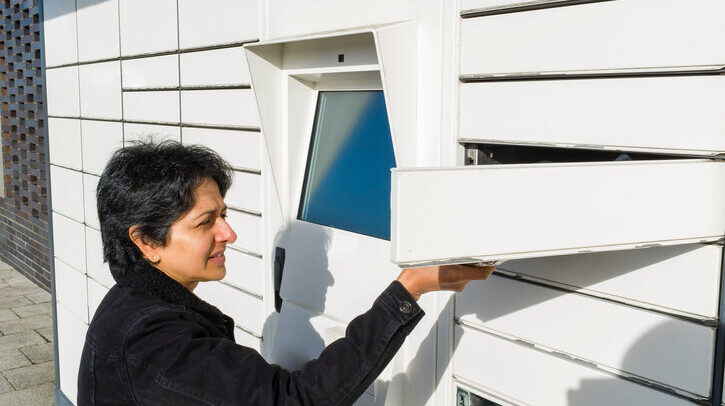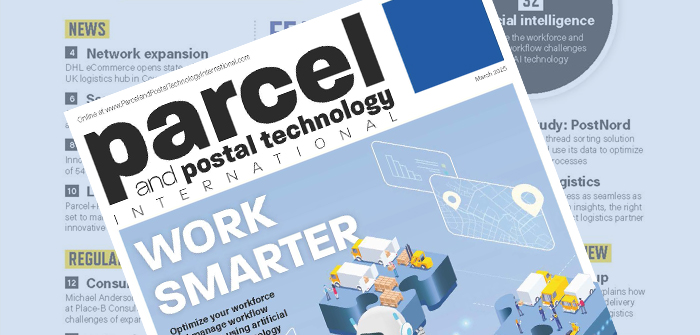The UK parcel delivery market is one of the largest in Europe but until now, the proportion of OOH deliveries has significantly lagged behind the market leaders such as the Baltic, Nordic and Central Eastern European countries. For example, compared with the UK, Poland has nearly three times more OOH locations per capita at current levels. Some of this disparity can be attributed to population density and geography, but underlying this are fundamental differences in the markets themselves.
However, recent developments from newer entrants, and investment in networks by existing carriers and operators, mean there are now more than 100,000 OOH locations in the UK, leading many in the industry to believe that we are reaching an inflection point in the market.
What are the factors that will enable this acceleration in growth to continue, and how will the conversion from at home to OOH be achieved?
It is informative to look back and understand why the UK e-commerce market has become so successful. The country was one of the first to truly embrace e-commerce. Over 40 years ago, prior to the internet revolution, the delivery sector had multiple players serving a strong ‘home shopping’ sector. In addition to private carriers who capitalized on the struggles of Royal Mail, vertical delivery solutions opened themselves up to other sellers, and B2B carriers diversified to serve this market.
As online shopping emerged, sector leaders such as ASOS drove volumes higher and fostered product and service innovation. Consistent volume growth allowed carriers to scale and new entrants to gain a foothold. Delivery solutions became relatively sophisticated, and the sector segmented into value, premium and express/specialist.
However, while OOH solutions were growing, they were not prioritized. Investments were mostly in capacity, technology and service and product offerings. Collect+ and others emerged to expand PUDO solutions but did not transform the market. Carriers became adept at reducing undeliverable items to a manageable level without the need for OOH alternatives. Covid then boosted at-home delivery processes with the adoption of contactless and photo-evidenced delivery confirmation.
So, what’s changed in the last few years? First, the experience of locker providers in Northern and Eastern European and Baltic markets has added the level of sophistication required to match the UK delivery sector’s solutions. Second, carrier profitability, rarely above 10% in the best of years, can be boosted through the consolidation and delivery certainty that lockers bring. Third, integration of carrier networks into checkouts and through third-party integrators is enabling a direct-to-locker service that increases the operational benefit.
The growth forecasts for OOH volume and the supporting lockers and PUDOs in the UK look robust, and the headroom for operational benefits for existing carriers is significant. National and local government policies to encourage, mandate or even legislate for a more efficient and sustainable final-mile delivery sector are manifold, and the new and next generation of shippers and consumers are ever more focused on sustainability. Driving much of the recent growth have been recommerce and returns, both of which have been greatly enabled by expanded PUDO availability.
It won’t be a straightforward journey for carriers and operators to rapidly grow the proportion of OOH deliveries in the UK. Although the recommerce sector has a natural proclivity for locker use, and Gen Z and Gen Alpha users are more focused on sustainability, the existing set of solutions for at-home delivery means other consumers may not be so easily persuaded, converted and then retained.
While shippers and integrators may guide consumers to the selection that best suits them, consumers will predominantly choose carriers based on price, service offered and reputation. Service performance remains as critical as ever, and carrier reputation a key differentiator. Locations and times advertised as available at checkout must translate into the date and time delivered to avoid reputational damage. With sophisticated and trusted at-home delivery solutions available, consumers may be reluctant to switch, and may then switch back if service doesn’t meet expectations.
During this growth phase, carriers converting at-home deliveries to OOH, or bringing on new OOH volume, will have to ensure lockers are not saturated and unavailable for delivery. Critically, carriers and operators will have to work hard to reduce and maintain pickup item dwell times to retain capacity. Thankfully, the range and breadth of AI-derived machine learning and optimization tools that carriers can use to manage these challenges is strong and rapidly increasing.
The future is bright for locker operators but, as always in a competitive environment, although price differentials are powerful, service is as likely to define success.
This article was originally published in the March 2025 issue of Parcel and Postal Technology International



